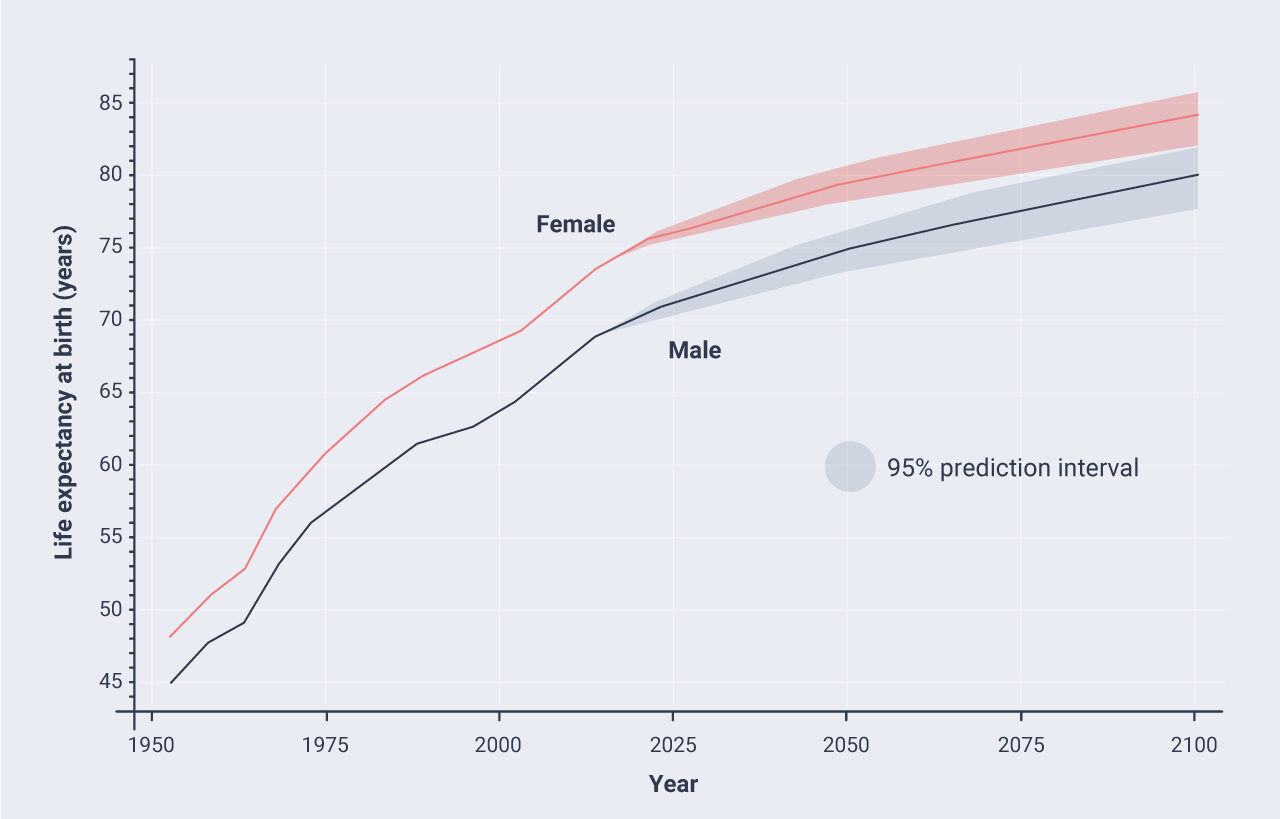By Supertrends Co-Founder Lars Tvede
The ability to prevent aging – through a fountain of eternal youth, or any other means – has been the dream of mankind for as long as we can record. Indeed, since we cannot bring it about on Earth, most civilizations have comforted themselves with the idea of an eternal afterlife.
Most people really don’t want to die, and back on Earth, who wouldn’t want 60 to become the new 40, and 80 the new 60, if not better. Actually, 120 being the new 80 would be nice. Certainly, if someone can deliver a remedy for aging, even a partial one, then the market for that solution – whatever it may be – will be huge, and that is the first reason we wrote this report.
Of course, it’s not that we haven’t made any progress to date. Two hundred years ago, the average human lifespan was between 30 and 40, and now it is approximately 74 years globally and around 80 in rich countries. This was achieved due to a combination of medical progress, better lifestyles, safer environments, and other factors. However, even as we now manage to live longer by dodging the plague, cholera, kicking horses, famine, and other afflictions, we still do age.

What is aging?
Simply put, there are two elements of aging. The first is mechanical wear and tear, which we can increasingly fix with procedures such as hip replacements, dental processes, eye operations etc. However, the far more complicated challenge – and one of the reasons for many of those mechanical issues – is the constant genetic deterioration in every human body at the level of the genome.
Genome instability breakdown is a very tricky problem, and to date, we have not come up with any general solutions other than lifestyle changes, which many people struggle to follow and which can only take you so far. Over an average human lifespan, there are some 10 quadrillion cell divisions in the human body, and mistakes in some of these create lasting mutations, which then accumulate into the trillions. On top of this, our DNA is exposed to radiation, harmful chemicals, viral infections, and more, which also contribute to the genetic degradation.
However, there are now many R&D projects that aim to slow down the natural aging process by addressing the problem at its core, and this field is about to get rather interesting. That, by the way, is the second reason we wrote this report, which discusses how scientists are now rapidly closing in on ways to protect our bodies – and to fix the consequences of alterations at the genome level, once they have occurred.

As our report shows, there are a number of possible approaches to preventing aging, many of which seem very plausible. One is to protect the telomeres, which when degraded cause our cells to die or (worse) become damaging zombies. Another is to rid the body of these zombies once they occur. A third approach in the works is to resupply the body with stem cells so that they can continue to repair damage in the body. And there are many more.
What is evident is that once we can really extend a healthy life through such means, the business opportunity will be enormous, but so will the impact on societies. I hope that you will find the contents of this report as fascinating as I do!